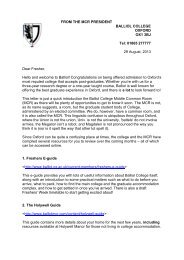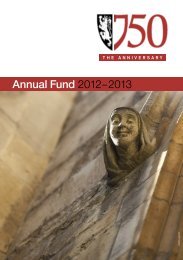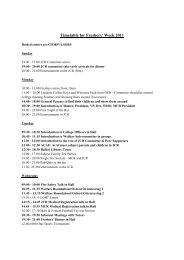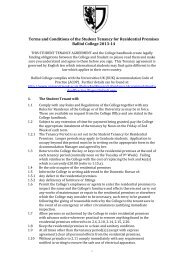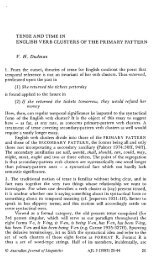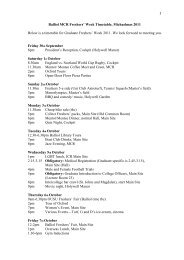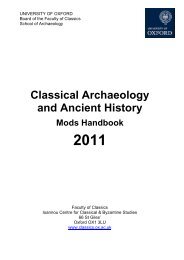x - Balliol College - University of Oxford
x - Balliol College - University of Oxford
x - Balliol College - University of Oxford
Create successful ePaper yourself
Turn your PDF publications into a flip-book with our unique Google optimized e-Paper software.
C.M. Martin - July 2011<br />
Revision 2 Part A<br />
Statics Problems<br />
1. An aeroplane with four jet engines, each producing 90 kN <strong>of</strong><br />
forward thrust, is in a steady, level cruise when engine 3 suddenly fails.<br />
The relevant dimensions are shown in Figure 1. Determine the<br />
resultant <strong>of</strong> the three remaining thrust forces, and its line <strong>of</strong> action.<br />
Figure 1<br />
2. The foot <strong>of</strong> a uniform ladder rests on rough horizontal ground while<br />
the top rests against a smooth vertical wall. The mass <strong>of</strong> the ladder is<br />
40 kg. A person <strong>of</strong> mass 80 kg stands on the ladder one quarter <strong>of</strong> its<br />
length from the bottom. If the inclination <strong>of</strong> the ladder is 60° to the<br />
horizontal, calculate:<br />
a) the reactions at the wall and the ground;<br />
b) the minimum value <strong>of</strong> the coefficient <strong>of</strong> friction between the ground<br />
and the ladder to prevent the ladder slipping.<br />
3. Figure 2 shows a tower crane. The counterweight <strong>of</strong> 1500 kg is<br />
centred 6 m from the centreline <strong>of</strong> the tower. The distance x <strong>of</strong> the<br />
payload from the centreline <strong>of</strong> the tower can vary from 4 to 18 m.



